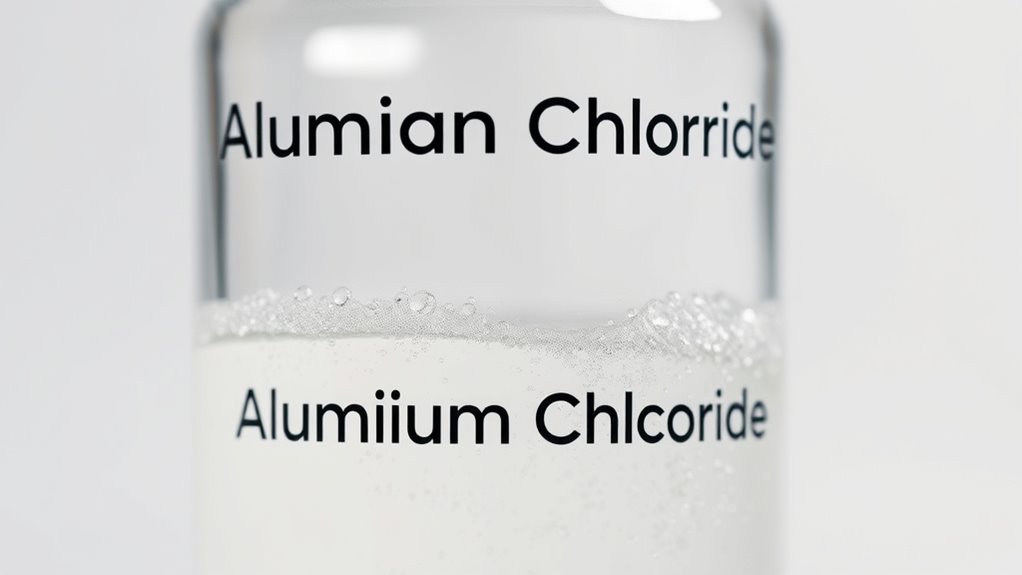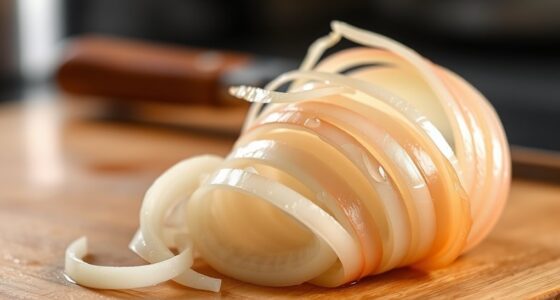Antiperspirants stop sweat by using aluminum salts, like aluminum chloride, which form a gel plug inside your sweat ducts. When you apply the product, these aluminum compounds hydrolyze in sweat, creating a thick barrier that physically blocks moisture from reaching your skin surface. This process reduces sweating and odor. The chemistry behind this is fascinating, and if you keep exploring, you’ll learn even more about how formulations work and improve your comfort.
Key Takeaways
- Aluminum salts hydrolyze in sweat to form gels that physically block sweat ducts.
- These aluminum polycations bind to sweat proteins, creating dense plugs that occlude gland openings.
- The gel formation reduces moisture reaching the skin surface, effectively controlling sweat flow.
- pH levels influence the stability and formation speed of these aluminum-based duct plugs.
- The result is a physical barrier that temporarily prevents sweat secretion, reducing moisture and odor.
The Basic Mechanism of Sweat Suppression
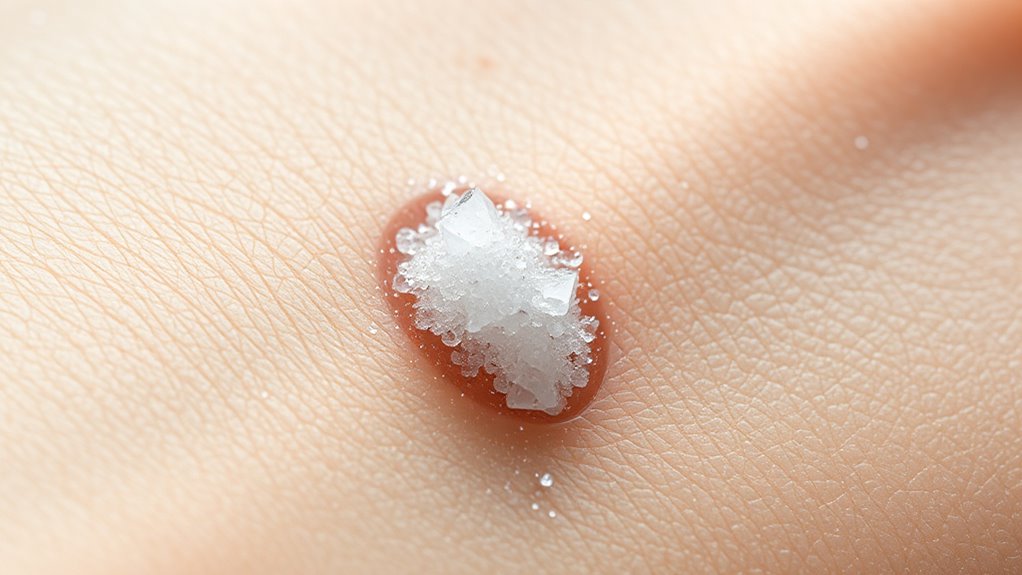
Understanding how antiperspirants suppress sweat begins with recognizing the role of sweat glands and how they produce moisture. Your body has millions of eccrine sweat glands that release sweat through ducts to cool you down. When heat, stress, or physical activity trigger sweating, these glands respond by secreting moisture into the ducts, which then flow to the skin surface. Antiperspirants work by forming gel plugs inside these ducts when aluminum compounds react with sweat, creating a physical barrier that blocks sweat from reaching your skin. This blockage reduces overall sweat production and helps control odor. The body senses this obstruction through a feedback system, temporarily decreasing gland activity. Additionally, the biochemical reaction of aluminum compounds with sweat helps to minimize bacterial growth, which is a key factor in odor prevention. This process not only reduces moisture but also affects sweat gland function, leading to decreased sweat output over time.
Recent research indicates that the reaction mechanism between aluminum compounds and sweat plays a critical role in determining the effectiveness and duration of sweat suppression. This combined mechanical and biochemical action results in effective sweat suppression for hours.
Key Role of Aluminum Salts in Antiperspirants
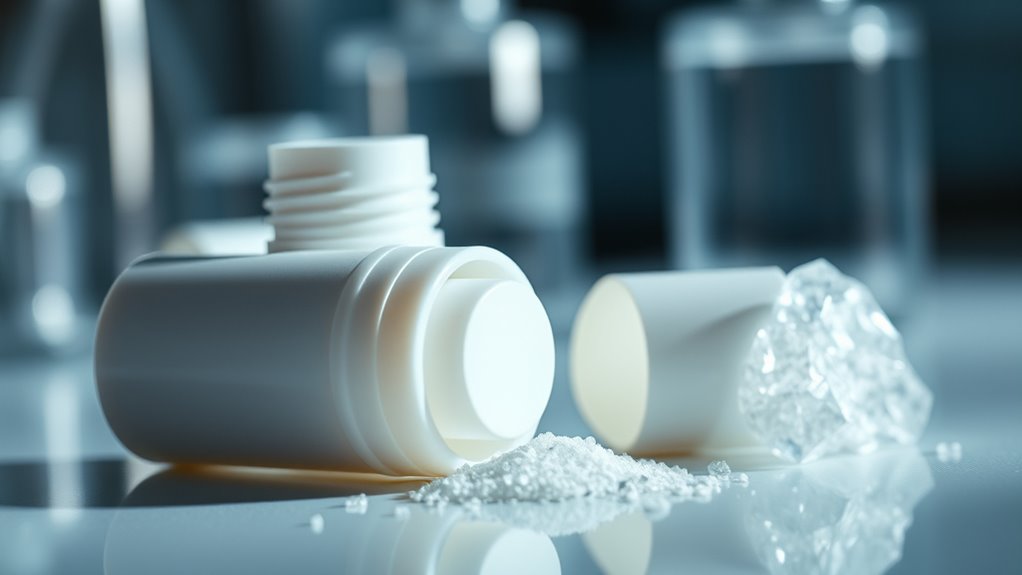
Aluminum salts are the active ingredients that enable antiperspirants to block sweat effectively. They work by hydrolyzing in sweat, forming a gel that creates a physical barrier over sweat ducts.
Aluminum salts block sweat by hydrolyzing and forming a gel over sweat ducts.
Aluminum chlorohydrate (ACH) is the most common variant, balancing efficacy and skin tolerance, while aluminum chloride hexahydrate is highly effective at blocking sweat.
ZAG salts, combining zirconium and glycine, offer a more complex but less studied option. These salts undergo hydrolysis influenced by pH, leading to viscous gels that adhere to duct walls, forming plugs.
They precipitate with mucopolysaccharides and proteins inside sweat glands, damaging epithelial cells and physically blocking sweat flow.
Different aluminum salts vary in their ability to form occlusive plugs, with ACL and ACH being particularly effective. Additionally, the formation of a gel-like barrier is essential for the physical blockade of sweat ducts, which is facilitated by the hydrolysis process of these aluminum compounds.
How Aluminum Chloride and Similar Compounds Work
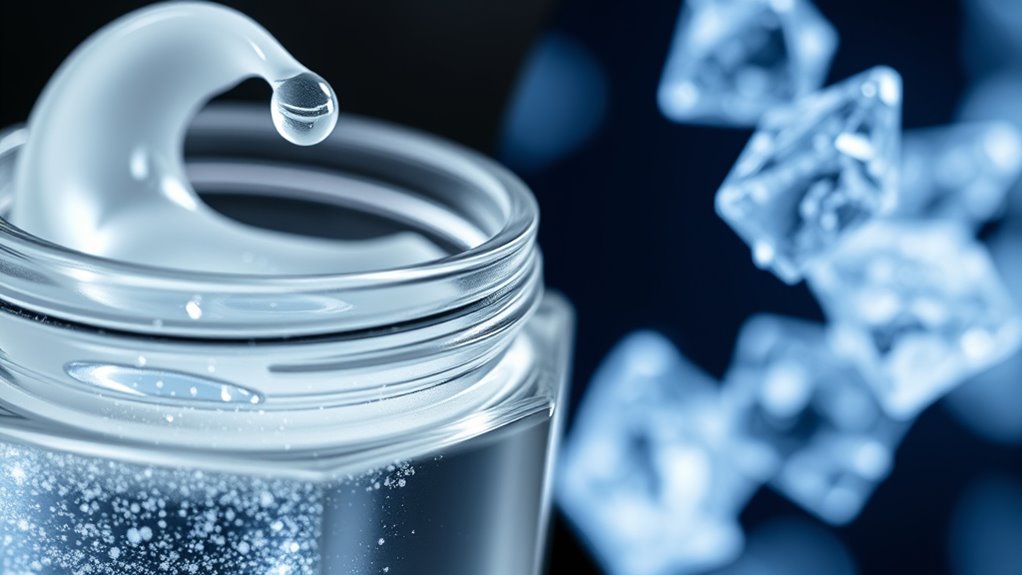
Aluminum chloride and similar compounds work by physically blocking sweat ducts through a chemical process that precipitates with mucopolysaccharides inside the glands. When applied, the metal ions interact with these mucopolysaccharides, forming a plug that obstructs the duct lumen. This process damages epithelial cells along the duct, leading to the formation of a temporary barrier that prevents sweat from reaching the surface. The body detects this blockage and reduces sweat production via feedback mechanisms. Additionally, the effectiveness of these compounds depends on their ability to form a stable physical barrier, which can be enhanced with repeated use. The formation of this barrier involves durable materials designed to withstand the conditions inside sweat glands, ensuring consistent performance. Since the obstruction is temporary, the duct remains blocked until skin renewal occurs, which gradually clears the plug. The body’s natural healing process can influence how long the blockage persists, and cell regeneration plays a vital role in restoring normal gland function. Different aluminum compounds, like aluminum chlorohydrate and zirconium salts, function similarly, creating a physical barrier that effectively reduces excessive sweating with repeated applications.
The Chemistry Behind Gel Plug Formation in Sweat Ducts
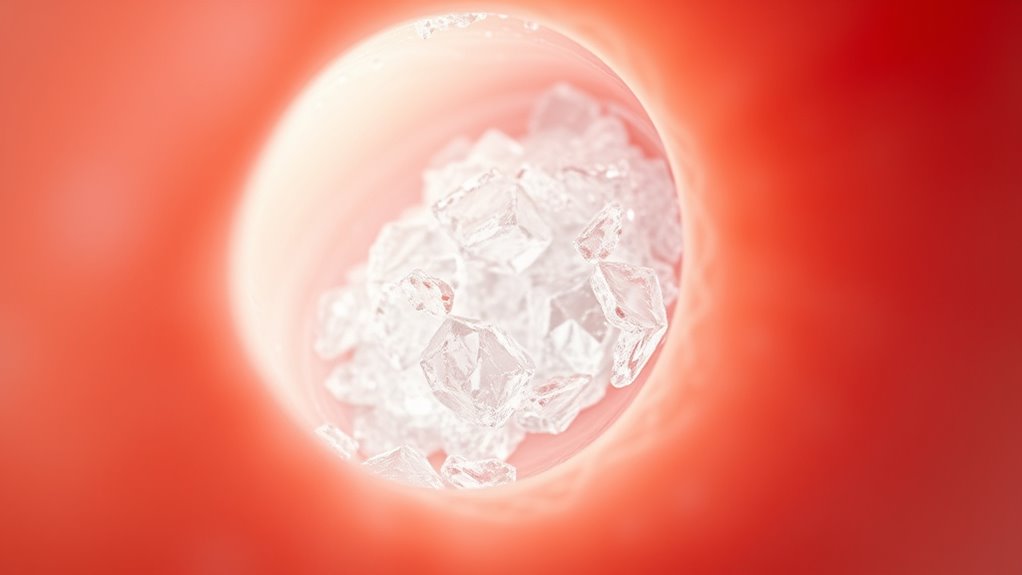
The formation of gel plugs in sweat ducts involves a two-stage process initiated by interactions between aluminium polycations and sweat proteins. First, aluminium polycations bind directly to sweat proteins at the duct junction, causing them to aggregate. These initial protein-polycation complexes adhere to the duct walls, forming a fragile membrane that acts as a nucleation site. This nucleation process is crucial for initiating the formation of the plug. Next, during the growth stage, hydrodynamic flow brings more sweat proteins and polycations into contact with the membrane. This causes the plug to thicken as it traps additional components, creating a dense, stable occlusion. The process results in a gel-like plug composed of aggregated proteins and aluminium compounds. This plug effectively blocks sweat flow, reducing moisture and odor while signaling the body to decrease sweat production.
Concentration Levels and Their Impact on Effectiveness
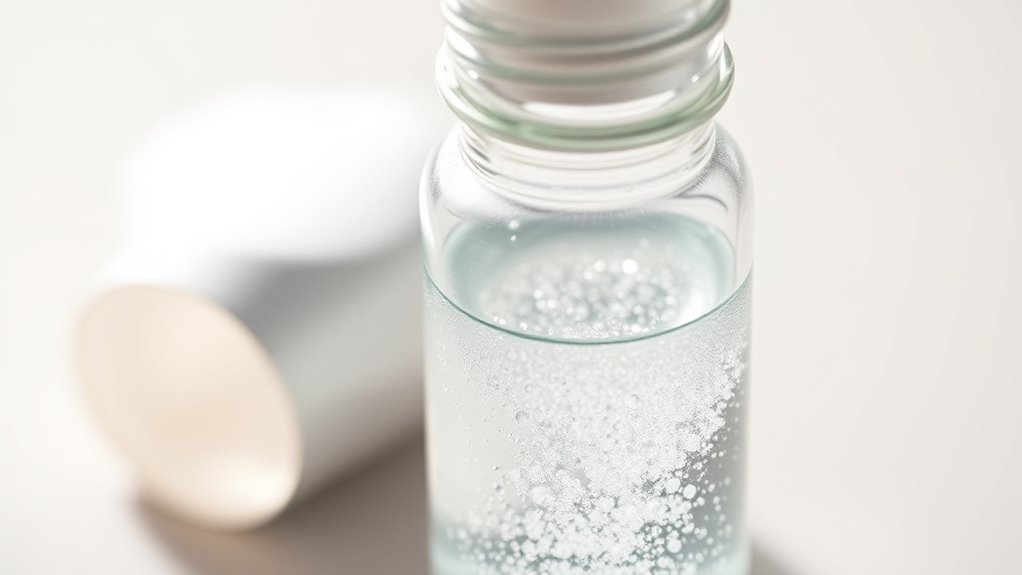
Choosing the right concentration of antiperspirant ingredients is essential for balancing effectiveness and skin tolerability. For excessive underarm sweating, 10% to 15% aluminum chloride hexahydrochloride works well, while higher concentrations, around 30%, are needed for hands and feet. Clinical strength products often contain up to 20% active ingredients, compared to about 10% in OTC formulas. Studies show 15% aluminum chloride is as effective as 20% but causes less skin irritation. Higher concentrations don’t necessarily improve results and may increase irritation risk. Lower concentrations like 12.5% or 1% via iontophoresis can still reduce sweating effectively. Most users notice results after three applications of 20% solutions, with effects lasting up to 45 days. Proper application timing and skin dryness help maximize benefits and reduce side effects. Additionally, the formulation of antiperspirants includes sulfate-free options that can minimize irritation for sensitive skin. Research also indicates that ingredient concentration plays a vital role in balancing efficacy and skin health.
Safety Considerations and Skin Compatibility
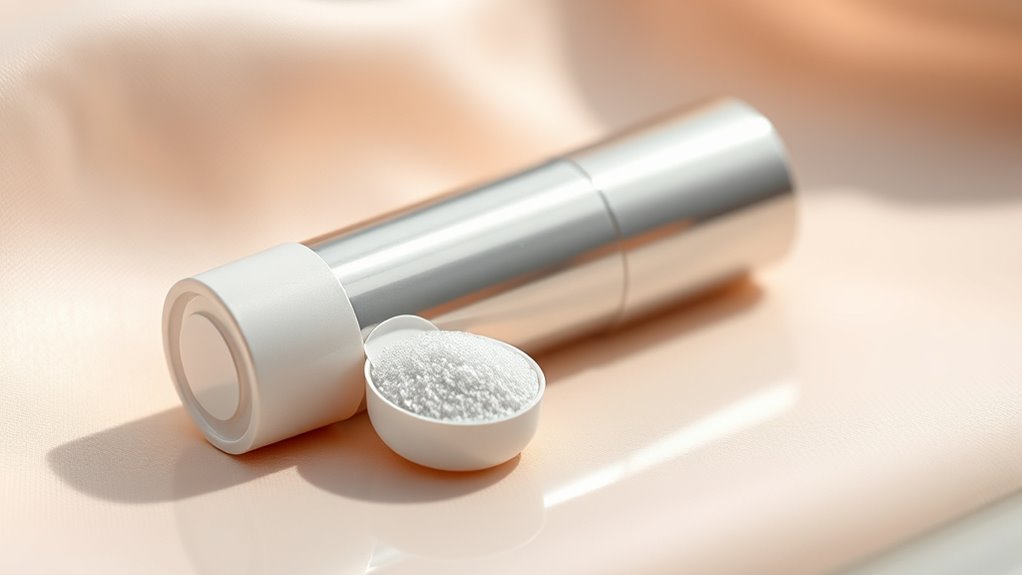
While selecting the right concentration of antiperspirant can improve sweat control, understanding how these products interact with your skin is equally important. Aluminum chloride may cause irritation, especially in sensitive areas like the underarms. Symptoms include redness, itching, burning, or blistering, which can worsen with repeated use or if combined with alcohol and fragrances.
People with skin conditions like Atopic Dermatitis are more prone to reactions. Hair removal practices can also increase sensitivity, raising the risk of irritation.
Fortunately, extensive research shows that, when used as directed, aluminum chloride-based antiperspirants are safe and unlikely to cause health issues like cancer. Choosing hypoallergenic or fragrance-free options can help minimize irritation for sensitive skin types.
Advances in Formulating Less Irritating Antiperspirants
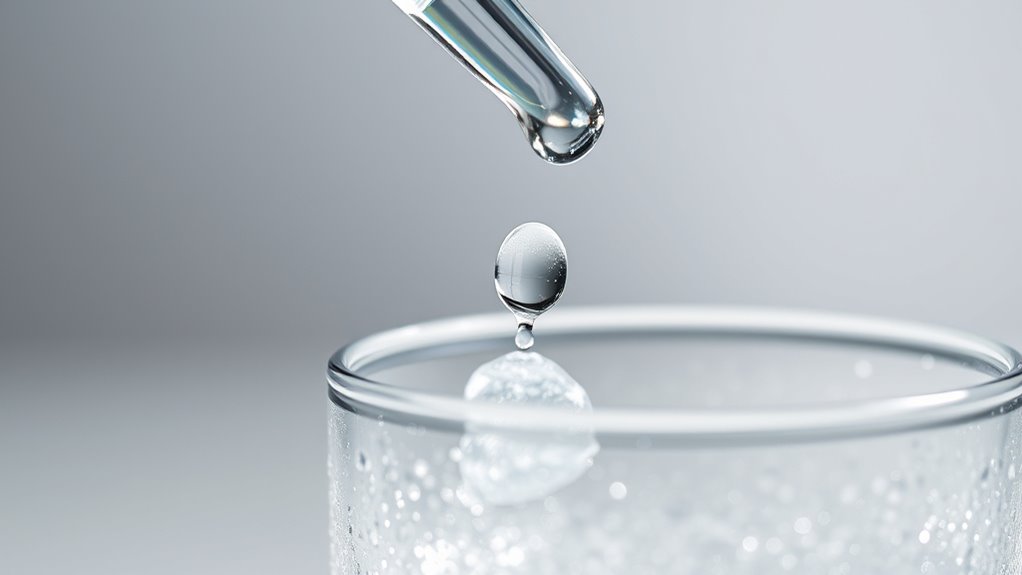
Recent advancements in antiperspirant formulation focus on reducing skin irritation without compromising effectiveness. Researchers introduced aluminum chlorohydrate as a milder alternative to aluminum chloride, which lessens skin sensitivity.
Salicylic acid has been added to boost antibacterial properties and soothe irritation. Formulations now often feature lower aluminum concentrations to maintain sweat-blocking power while minimizing discomfort.
Adjustments include reducing acidity and adding soothing agents like hydrating ingredients and smoothing agents such as dimethicone. Natural alternatives, like plant extracts, are gaining popularity for their antimicrobial properties and gentle nature.
Technological innovations, including advanced delivery systems, nanotechnology, and AI-driven formulation optimization, improve product performance and skin compatibility. These developments help create antiperspirants that are both effective and gentler on sensitive skin.
The Significance of Ph and Hydrolysis in Action
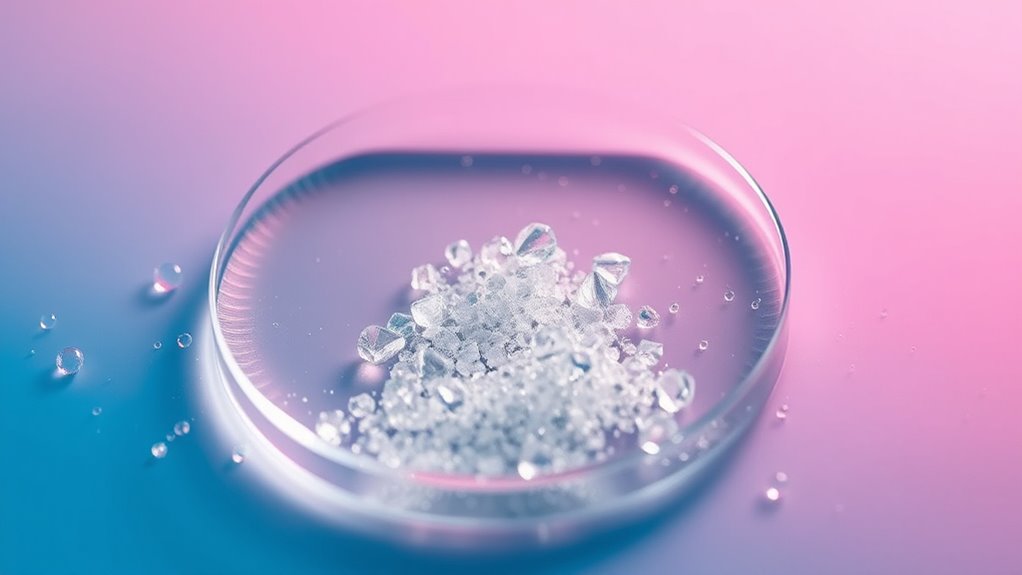
The pH level plays a crucial role in how aluminum-based antiperspirants function, as it influences both the formation and stability of the occlusive gel layer that reduces sweat flow. When the pH is within the typical range of 4.0 to 7.0, it creates an environment hostile to sweat gland activity.
Highly acidic aluminum salts cause rapid pH decreases, which enhances gel formation and improves efficacy. The buffer capacity of sweat affects how quickly the pH shifts, impacting gel stability.
Hydrolysis is key to this process; it occurs over hours at room temperature, leading to gel formation with specific viscosity and rheological properties. Understanding how pH and hydrolysis interact helps optimize formulations for effective, long-lasting sweat reduction.
Exploring New Active Ingredients and Future Directions
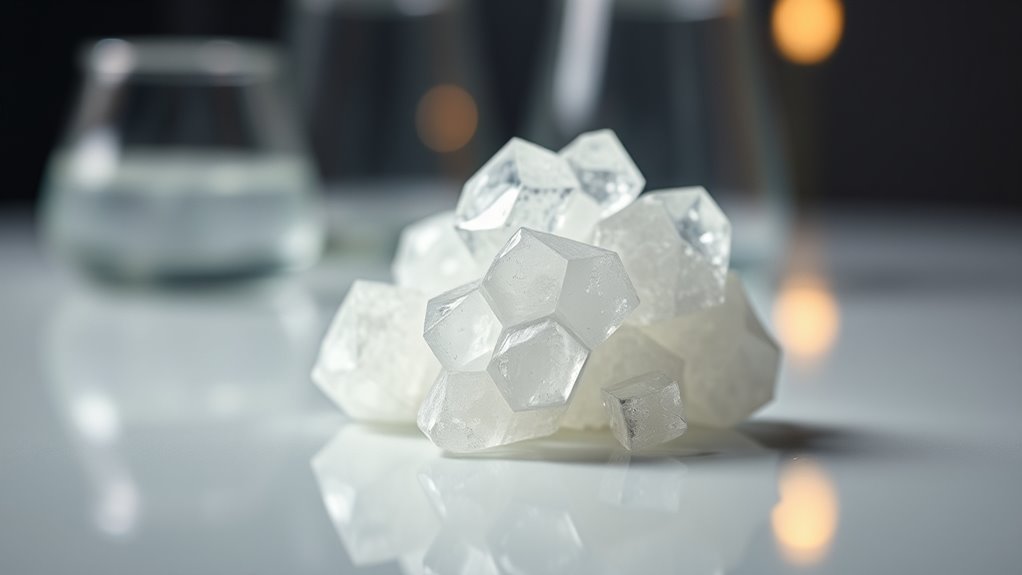
Innovations in antiperspirant technology are shifting towards discovering new active ingredients that can effectively control sweat and odor without relying solely on traditional aluminum salts.
Researchers are exploring antimicrobial agents that target odor-causing bacteria while preserving healthy skin microflora, reducing irritation risks.
Alternatives like plant extracts and naturally derived compounds offer eco-friendly, safer options, though replicating aluminum’s pore-occluding effects remains a challenge.
Advanced delivery systems, such as encapsulation and slow-release technologies, aim to enhance ingredient retention and extend effectiveness.
New metal complexes and synergistic blends combine antimicrobial and sweat-blocking properties for improved performance.
These developments signal a future where antiperspirants deliver stronger, longer-lasting results with better skin compatibility, expanding options beyond conventional aluminum-based formulas.
Practical Tips for Optimal Use of Aluminum-Based Antiperspirants
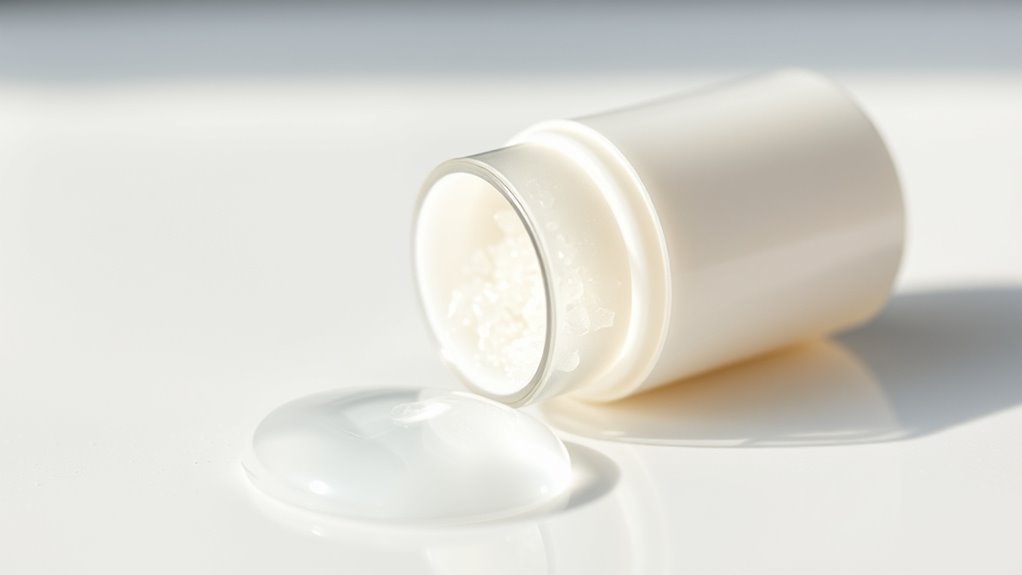
Using aluminum-based antiperspirants effectively involves more than just applying them; proper timing and application can markedly boost their performance.
For best results, apply it at night when sweat glands are less active. Make certain your skin is clean and dry before application to improve absorption and reduce irritation. Use the recommended amount—too much can cause irritation, while too little won’t be effective.
Avoid applying immediately after shaving to prevent skin irritation. If you have sensitive skin, start with lower concentrations and gradually increase as tolerated.
For conditions like hyperhidrosis, consult a healthcare professional for higher-strength or prescription options. Moisturize if needed, and perform patch tests to check for irritation.
Proper technique ensures maximum effectiveness and comfort.
Frequently Asked Questions
Can Antiperspirants Completely Stop Sweating in All Body Areas?
You might wonder if antiperspirants can totally stop sweating everywhere. The truth is, they can’t. They work only where you apply them, blocking sweat ducts locally.
Since your body has many sweat glands spread across different areas, antiperspirants can’t stop all sweating. Plus, your body needs to sweat for cooling, so complete cessation isn’t possible or safe.
They’re useful for targeted relief, but not a full-body solution.
Are There Long-Term Health Risks Associated With Aluminum Salts in Antiperspirants?
You might think aluminum salts in deodorants are a ticking health time bomb, but science says otherwise. The tiny amount absorbed through your skin isn’t enough to cause harm, and most health organizations agree there’s no proven link to cancer or neurotoxicity.
Sure, folks with kidney issues should be cautious, but for the average person, using antiperspirants with aluminum salts is generally safe—so enjoy feeling fresh without fear.
How Do Aluminum Salts Selectively Block Sweat Ducts Without Affecting Other Skin Functions?
You might wonder how aluminum salts target sweat ducts specifically. They interact with metal ions in the ducts, forming precipitates that create a plug. This process mainly affects the distal sweat gland ducts, leaving other skin functions untouched.
The salts form a gel under certain pH conditions, effectively blocking sweat flow without interfering with the skin’s broader activities, making them both effective and safe for regular use.
What Are the Differences Between Prescription and Over-The-Counter Antiperspirants?
You want to know the differences between prescription and OTC antiperspirants. Prescription options contain higher concentrations of aluminum chloride (10-30%), making them more effective for severe sweating, but they require a doctor’s approval and careful application.
OTC antiperspirants usually have lower aluminum salt levels (up to 20%), are available without a prescription, and are suitable for milder cases.
Prescription formulas are stronger, but may increase skin irritation risks.
Are Natural or Aluminum-Free Alternatives Effective for Sweat Control?
You might wonder if natural or aluminum-free alternatives effectively control sweat. While some users report satisfaction, scientific evidence is limited, and their effectiveness varies based on individual factors.
Natural options like mineral salts or baking soda can help reduce odor and absorb moisture, but they often don’t block sweat as well as traditional antiperspirants.
If you prefer natural choices, try different products to find what works best for your skin and activity level.
Conclusion
Understanding how aluminum salts block sweat ducts can help you choose the right antiperspirant. Did you know that over 80% of antiperspirants contain aluminum chloride compounds? By forming gel plugs, these ingredients effectively reduce sweat without compromising skin health when used properly. So, next time you apply your antiperspirant, you’re using a science-backed method that’s been trusted for decades to keep you feeling fresh and dry.
